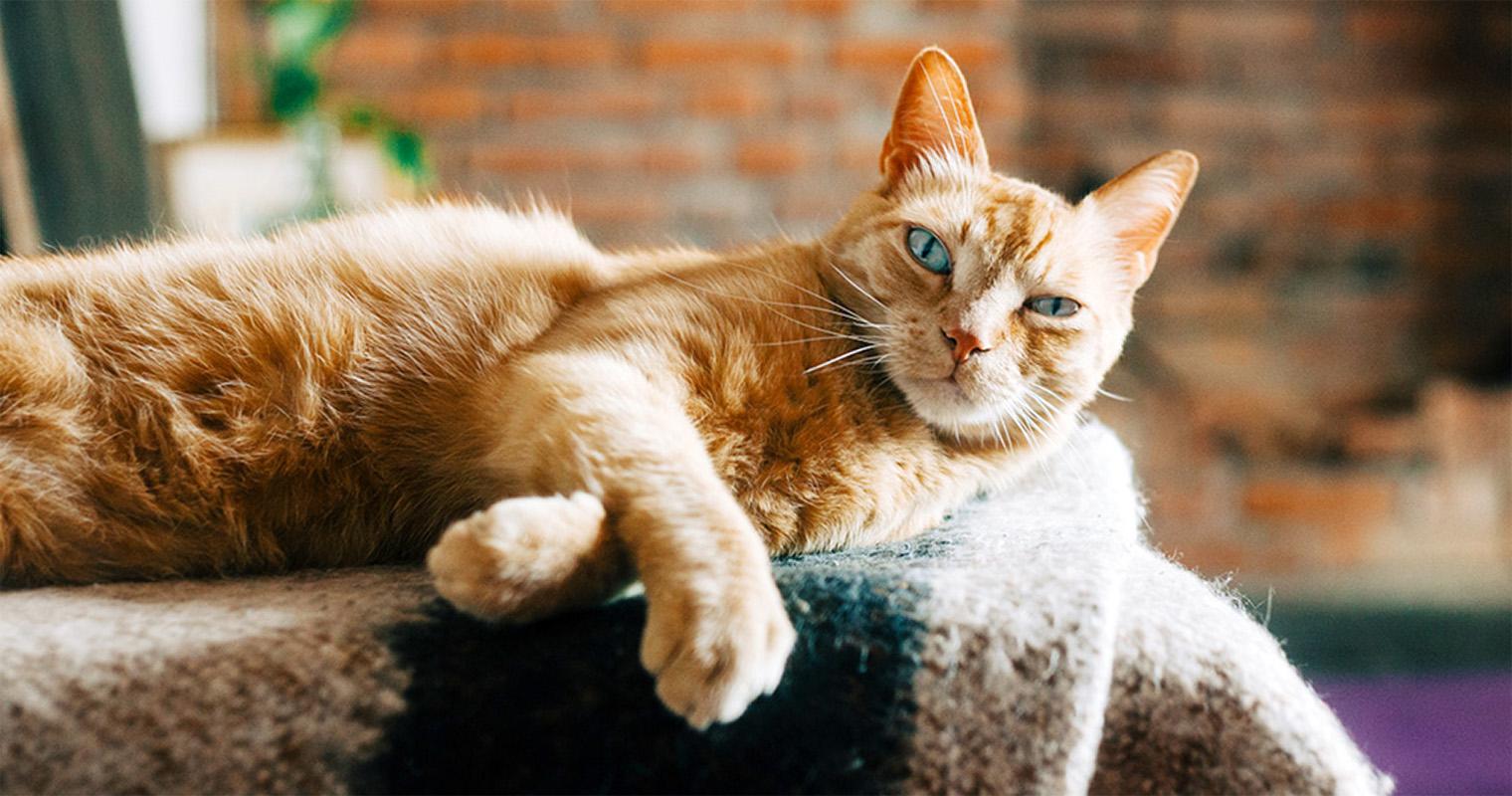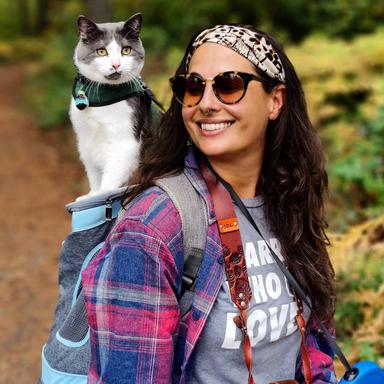A Guide to Fostering Cats: How to Become a Foster Parent for Cats
Ready to make a difference in a kitty’s life?
Ready to make a difference in a kitty’s life?
by Janelle Leeson, | June 3, 2025

Giada Canu / Stocksy
If you’ve considered upgrading your life lately, turn away from all those products Instagram says you need and…foster a cat! That skin serum might make your pores look better for a few days, but fostering gives your life a very different and meaningful kind of boost. If this sounds like the right move for you, reach out to a shelter or rescue organization to learn more about their fostering process and any specific requirements.
“Fostering a pet is one of the most important ways our community can help save lives,” says Jordan Frey, marketing manager at San Diego Humane Society. Among the many benefits of fostering, foster parents create space for more pets in need, provide a healing home-away-from-home, and allow a pet’s true personality to shine, facilitating better matches with their forever homes.
Ahead, this comprehensive cat fostering guide answers the most commonly asked questions about fostering cats, drawing from both personal experience as a cat and kitten foster parent and expert insights from shelters and rescues nationwide.

Thinking about fostering a pet? Read more to learn about the fostering process and benefits of fostering.
Those looking to foster a cat can start by exploring rescues and shelters in their area. Rescues typically operate through networks of foster homes and may focus on specific breeds or more challenging circumstances. Shelters are run by government or animal welfare organizations and have physical locations. The distinctions between organizations will be important as you learn about the policies of different foster programs.
Once you’ve identified one or two organizations that look like a fostering fit, connect with their staff. Here are some important questions to guide your conversations:
Will cats or kittens undergo veterinary check-ups and/or receive vaccinations and flea treatments before coming to my home? This is especially important if you have other pets or children in your home.
Is veterinary care provided in-house or will I need to visit a partner veterinary clinic? Rescue organizations are often foster-based, so you’ll likely need to visit a partnering veterinary clinic for care.
How will appointment scheduling and payment for services be handled?
Is a home inspection required before fostering?
Will I handle cat bios and adoption applications? If so, you can expect a high volume of applications for kittens.
What educational support is available for foster parents? Whether it’s bottle-feeding, caring for pregnant mamas, or addressing your general cat questions, having a reliable support group is crucial.
What is the average fostering duration?
Do you provide supplies such as food, litter, beds, and toys, and if so, where can I pick them up? Established shelters may offer on-site supplies, while rescues might have designated pick-up locations, potentially located at other volunteers’ homes.
After choosing the organization that suits you best, be prepared to fill out paperwork. You can expect to share information about your living situation, including whether you own or rent your home. If you’re a renter, have your landlord’s contact information on hand.
The organization will also want to know who you share your home with and about any current pets you may have. No need to worry; you are welcome to foster if you have pets at home. But as the Oregon-based shelter The Pixie Project emphasizes: “We never want the addition of a foster animal to cause extreme stress or unhappiness to a resident pet.” They’ll make every effort to match you and your pets with foster animals who are compatible. Additionally, a proper introduction will start your foster experience off on the right paw.
While specific cat selection might not be possible, sharing your preferences helps match you with a suitable feline foster (or even a bonded pair).
The time between submitting your application and being matched with a foster cat can vary. Some organizations may pair you within the week, while others might have additional requirements, such as an in-home inspection and a meet-and-greet or foster care training. Have your space ready for their arrival by readying a quiet room for your foster cat to settle into.

Evrymmnt / iStock
Ready to welcome a kitty into your life? You’ve navigated the initial steps — here’s what you can expect as a cat foster parent.
The length of time a cat is fostered varies depending on their individual needs. The goal of fostering is typically to provide a home for cats until they are prepared for adoption. Some cats might require only a week of foster care to recover from a medical procedure. Others, such as pregnant moms, may stay in a foster home until their kittens are at least eight weeks old and ready for adoption. But, many foster programs are flexible and can tailor the duration to meet your needs.
Fostering cats doesn’t pay, but you can likely expect support from your chosen organization. “We ensure the foster volunteer has everything they need to keep the pet happy and healthy at home,” says Frey of the San Diego Humane Society fostering program. She says the society provides food, medical support, and other necessary supplies for fostering at no cost to the foster parent.
When it comes to grooming or behavioral training, organizations may not cover the costs without prior approval. If an organization can’t provide basic supplies, volunteers can still write off their foster pet supplies on their taxes.
Fostering requirements vary among organizations, but generally, an adult who is over the age of 18 is eligible to apply to be a foster parent. While children are often encouraged to participate in the responsibility of fostering, parents must commit to overseeing the care and providing transportation for the foster cat as needed.

Carolyn Lagattuta / Stocksy
Fostering a cat may sound like the ideal situation when you have cat or kitten fever yet can’t commit to lifelong care, and speaking from personal experience (having fostered nearly 50 cats and kittens), there are indeed more incredible moments than downsides. Again: total life upgrade.
But, it’s important to acknowledge that fostering can be demanding, especially if you open your home to cats with special medical or behavioral needs. Even a litter of kittens can be a handful. Updates on their new lives are never guaranteed. Additionally, it’s a harsh reality that cats or kittens can die during their time in foster care. And saying goodbye when your foster cat finds their forever home can be emotionally taxing but equally rewarding.
It’s not unheard of for foster cat parents to find themselves falling in love with their foster cat, and they may decide to make the adoption official. Although some call this a “foster fail,” Frey emphasizes that adoption is never considered a failure. Alternatively, you can explore a foster-to-adopt program if your local shelter or rescue offers one and there’s a specific cat you’d like to know better.
Some say it gets easier to say goodbye to foster pets the more you foster. Take comfort in knowing that thanks to your efforts, your foster cat can now enjoy the rest of their life in their forever home, while you create space to continue fostering more pets in need.

Janelle Leeson is a Portland, Oregon-based freelance writer. Her work has been featured in magazines such as Inside Your Dog’s Mind, Inside Your Cat’s Mind, and Paw Print, as well online at Insider Reviews, NBC Select, Shop Today, PetMD, and Daily Paws. She has two adventure cats, a flock of urban chickens, and a soon-to-be-husband who doesn’t mind housing the occasional foster cat — or five.

Adoption Advice

Foster & Volunteer

Adoption Advice

Foster & Volunteer
Fostering before adopting is a great way to help rescues, while figuring out if you’re ready for cat parenthood.

Foster & Volunteer
Fostering is a great way to dip your toes into the pet-parenting waters, while helping a pet in need.

Foster & Volunteer
From adopting a cat from a shelter to volunteering at a local animal rescue, learn how you can celebrate it.

Shelters & Rescue
You want to help, but where to start? Here’s how to distinguish the legitimate causes from the sketchy ones.

Foster & Volunteer
Once you know what to expect, spending your spare time caring for felines can be the best decision you’ve ever made.

Foster & Volunteer
Thinking about fostering a pet? Read more to learn about the fostering process and benefits of fostering.